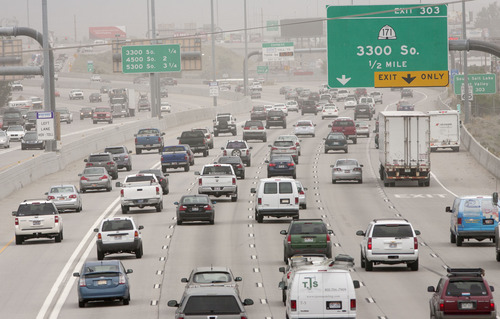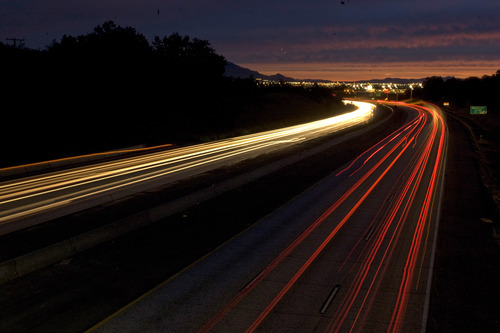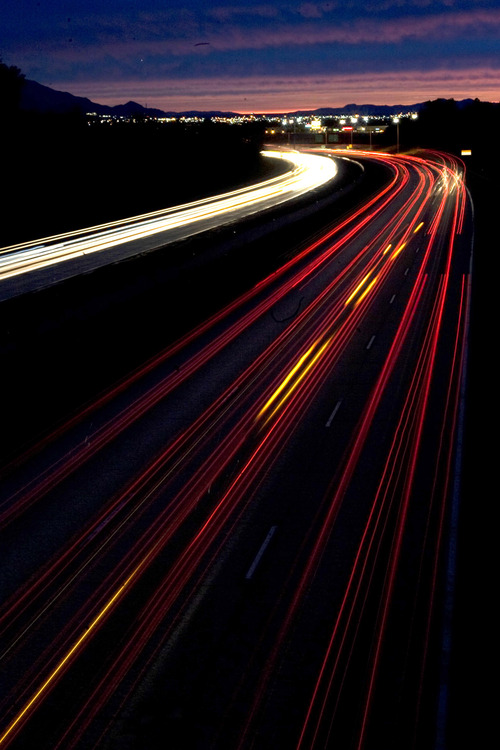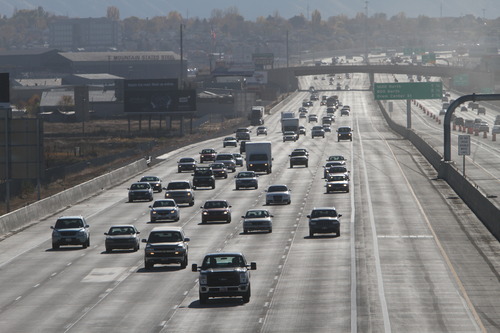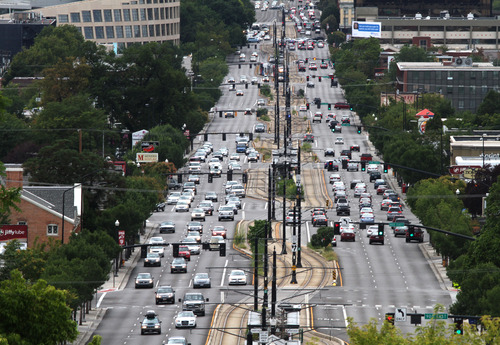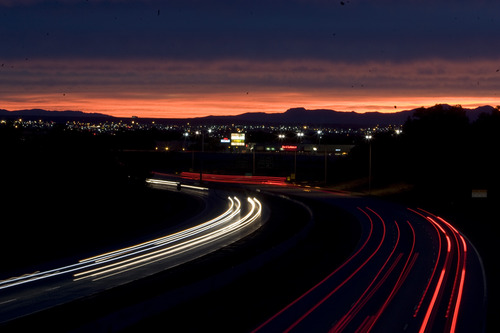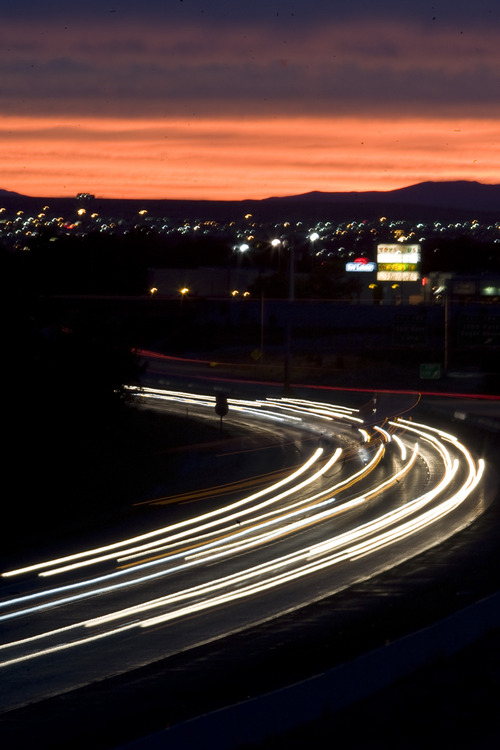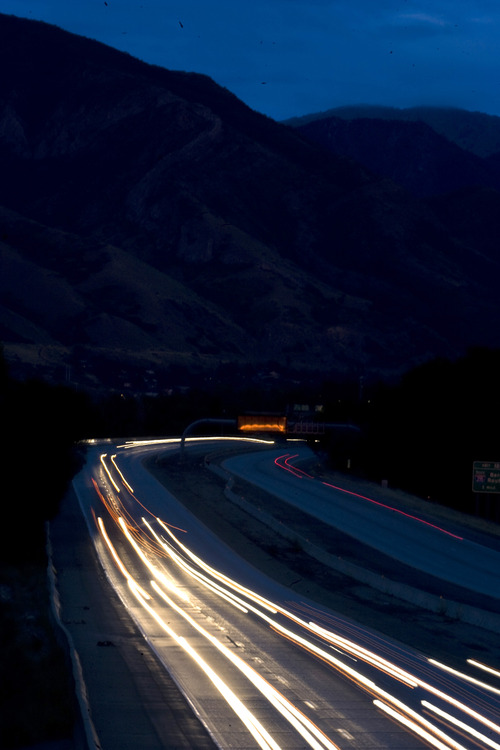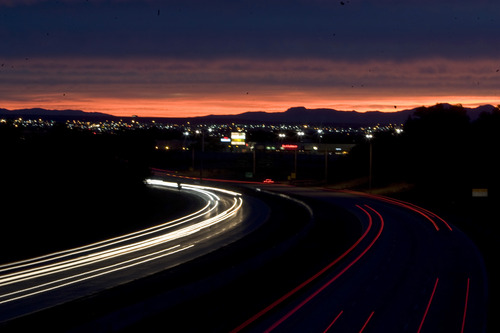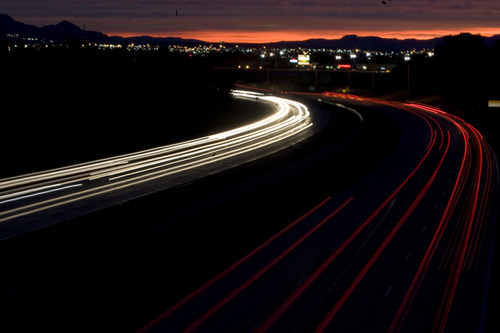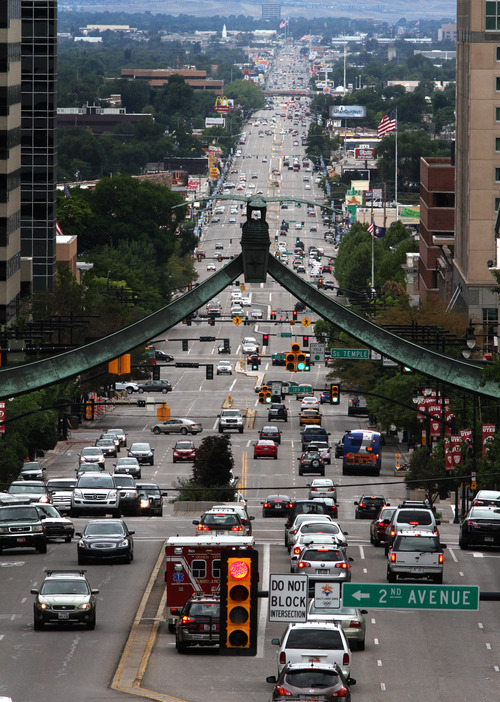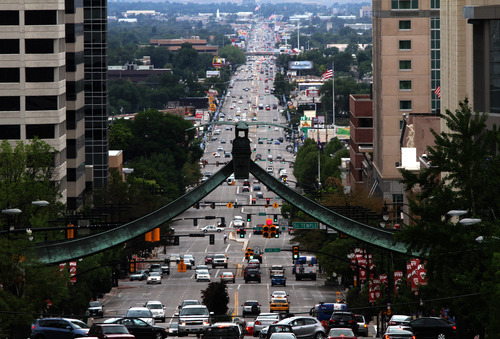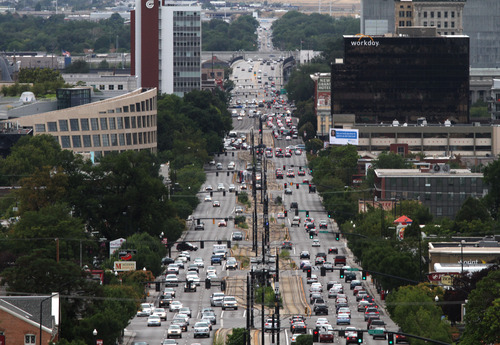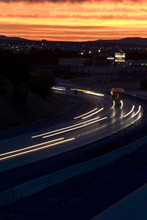This is an archived article that was published on sltrib.com in 2013, and information in the article may be outdated. It is provided only for personal research purposes and may not be reprinted.
New federal data say motorists drove more than 9.2 billion miles on Utah's interstate freeways in 2011 — about 100 times the distance from the Earth to the sun. They had a relatively smooth ride, with Utah freeway conditions rated better than average nationally.
"We recognized that a majority of miles traveled in Utah are on interstates and primary arterials," Shane Marshall, deputy director of the Utah Department of Transportation, said Monday after the data were released. "So we have focused heavily on making sure those routes are in good condition," although the state has sacrificed maintenance on lesser traveled roads because of tight budgets.
Keeping freeways in good shape is important to the state's economy, Marshall added.
"As goods and services move through the state, the manufacturers and suppliers rely heavily on interstates and highways that are predictable. As the emphasis grows on just-on-time delivery in the nation, that becomes more important," he said.
Data released by the U.S. Department of Transportation show that Utah ranked No. 29 among the states for distances driven on interstate freeways. In comparison, Utah ranks No. 34 in population.
—
California cruising • California was No. 1 in interstate miles traveled at 84.7 billion, about nine times higher than in Utah. In fact, two California freeways carried more traffic by themselves than all of Utah's freeway traffic combined: Interstate 5 (21.4 billion miles) and California's section of I-15 (10 billion).
Other top states included: Texas, 55.7 billion miles; Florida, 33.7 billion; Ohio, 31.4 billion; and Illinois, 31 billion.
Nationally, people traveled 2.95 trillion miles in 2011, which officials said was the eighth highest ever and about double the amount traveled in 1980. Marshall said travel in Utah dove when the recession hit and remained fairly flat for several years, but has risen slowly more recently.
I-15 carried 70 percent of all of Utah's freeway traffic — 6.45 billion miles. About three-fourths of that travel came in urban areas. I-15 had 1,961 lane miles in 2011 — 953 urban and 1,008 rural — but I-15 has since been rebuilt and widened in Utah County to add more urban lane miles.
The next busiest freeway in the state was I-80 with 1.3 billion miles traveled. Mileage on other freeways included: I-215, 824 million miles; I-70, 431 million; and I-84, 295 million.
—
Rough roads • The data also said Utah's freeways are, on average, in good condition.
That is measured by the "International Roughness Index." Scores lower than a 95 are considered good, and scores of 170 or less are considered acceptable. All average scores for Utah interstates were under 95, with two exceptions: urban sections of I-80 averaged a 110, and urban areas of I-215 had scores of 98.
The average roughness score for urban freeways nationwide was 92. Utah's average score of 89 was a bit better. It ranked 17th best among the 50 states. But Utah has been able to keep up that relatively good quality of its freeways and other main arteries only by sacrificing maintenance on its less-traveled state highways, Carlos Braceras, UDOT executive director, told the Legislature's Economic Development Task Force last week.
He said the decision to halt regular maintenance on those less-traveled highways in recent years could be an expensive decision in the long run because maintaining roads is up to 25 times cheaper than eventually being forced to rebuild them. However, Utah's state gasoline tax has not been raised in 16 years, and UDOT says it is doing the best it can with the money available.
—
Highway money • Mayors and business leaders have begun a push seeking to increase that gasoline tax, or other transportation taxes, soon.
Also, Braceras warned last week that about 700 bridges built in the 1960s and 1970s are nearing the end of their life span. While Utah has been replacing about 15 bridges a year recently, "We will have to step that up to 50 a year," he said.
Braceras said the state would need about $21 million a year extra to provide maintenance on its less-traveled highways, plus an additional $9 million a year for bridge replacement.
U.S. Transportation Secretary Anthony Foxx said that over the past four years, the U.S. Department of Transportation "has improved more than 331,000 miles of roads with federal funds, but we know there's a lot of work that still needs to be done. Information like this, along with new construction and design technologies, help us stretch our dollars further." —
Miles traveled on Utah's interstate freeways, 2011
Total • 9.28 billion miles (100 times distance from Earth to the sun)
I-15 • 6.45 billion miles, 69.5 percent of state total
I-80 • 1.29 billion, 13.9 percent
I-215 • 824 million, 8.9 percent
I-70 • 431 million, 4.6 percent
I-84 • 295 million, 3.2 percent
Source: Federal Highway Administration


